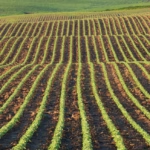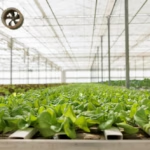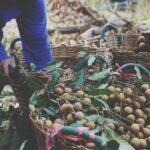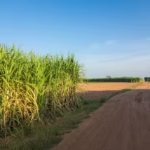Irrigation plays a crucial role in agriculture, especially in regions with erratic rainfall patterns like South Africa. With water scarcity becoming an increasingly pressing issue, it’s essential for farmers to adopt efficient irrigation techniques to maximize water use, optimize crop yields, and ensure sustainable agricultural practices. Here are ten techniques that South African farmers can implement for efficient irrigation:
- Drip Irrigation: Drip irrigation delivers water directly to the root zone of plants through a network of tubes or pipes with emitters. This method minimizes water loss due to evaporation and runoff, making it one of the most efficient irrigation techniques. Drip irrigation is well-suited for crops with shallow roots or spaced planting arrangements.
- Micro-Sprinkler Irrigation: Micro-sprinkler irrigation involves distributing water through small sprinklers or emitters mounted on low-pressure pipes. This method provides uniform coverage while minimizing water wastage through evaporation or runoff. Micro-sprinkler systems are suitable for a wide range of crops, including fruit trees, vegetables, and ornamental plants.
- Furrow Irrigation: Furrow irrigation involves creating shallow trenches or furrows between crop rows and filling them with water. This method is commonly used for row crops such as maize, soybeans, and cotton. Proper furrow design and management are essential to minimize water loss and ensure uniform distribution across the field.
- Subsurface Drip Irrigation (SDI): Subsurface drip irrigation delivers water directly to the root zone of plants through buried drip lines. This method reduces water evaporation and surface runoff while promoting efficient water uptake by crops. SDI is particularly beneficial for crops with deep root systems, such as sugarcane and vineyards.
- Center Pivot Irrigation: Center pivot irrigation involves rotating sprinklers mounted on a pivot system to irrigate circular or semi-circular areas of farmland. This method is commonly used for large-scale crop production, such as grains, alfalfa, and potatoes. Center pivot systems can be automated for precise water application and minimal labor requirements.
- Laser Land Leveling: Laser land leveling helps improve irrigation efficiency by creating uniform field slopes and eliminating low spots where water can accumulate. This technique ensures even water distribution and reduces the risk of waterlogging or runoff. Laser land leveling is particularly beneficial for rice cultivation and other flooded crops.
- Rainwater Harvesting: Rainwater harvesting involves collecting and storing rainwater for irrigation purposes. Farmers can capture rainwater from rooftops, surface runoff, or catchment areas and store it in reservoirs, tanks, or ponds for later use. Rainwater harvesting helps supplement irrigation water supplies and reduce reliance on groundwater or surface water sources.
- Mulching: Mulching involves covering the soil surface around plants with organic or synthetic materials to conserve soil moisture and reduce evaporation. Mulches also help suppress weed growth, improve soil structure, and regulate soil temperature. Mulching is especially beneficial in arid regions like South Africa, where water conservation is critical.
- Soil Moisture Monitoring: Soil moisture monitoring allows farmers to assess soil moisture levels and determine when and how much water to apply for irrigation. Various techniques, such as soil sensors, tensiometers, and remote sensing technologies, can be used to measure soil moisture content accurately. By optimizing irrigation scheduling based on real-time data, farmers can reduce water waste and improve crop water use efficiency.
- Crop Rotation and Diversification: Crop rotation and diversification help optimize water use and reduce the risk of water stress in agricultural systems. By alternating between crops with different water requirements, farmers can minimize water competition and maximize overall water productivity. Additionally, integrating drought-resistant crops or cover crops into rotation cycles can help improve soil health and water retention capacity.
By implementing these efficient irrigation techniques, South African farmers can mitigate the impact of water scarcity, increase agricultural productivity, and promote sustainable water management practices. Embracing innovative technologies, conservation methods, and crop management strategies can help ensure the long-term viability of agriculture in South Africa while preserving precious water resources for future generations.







